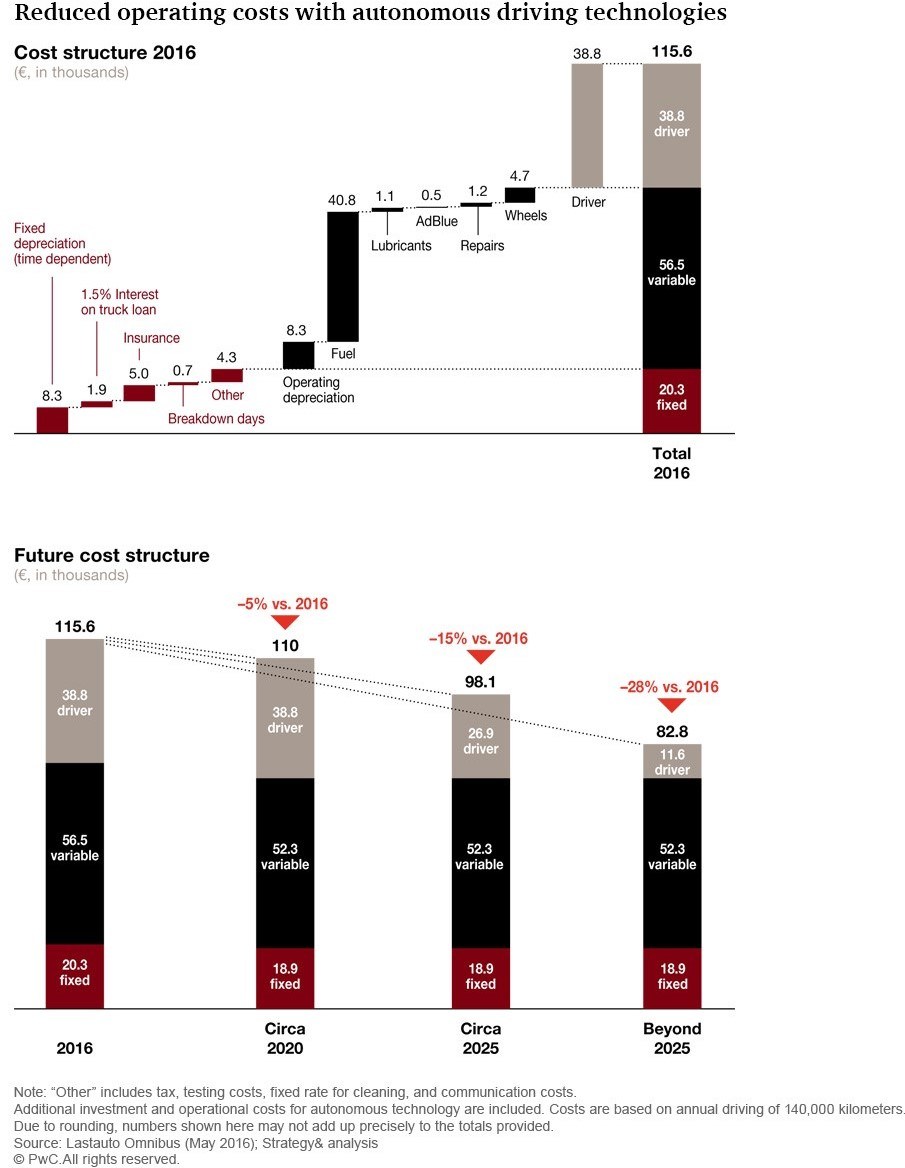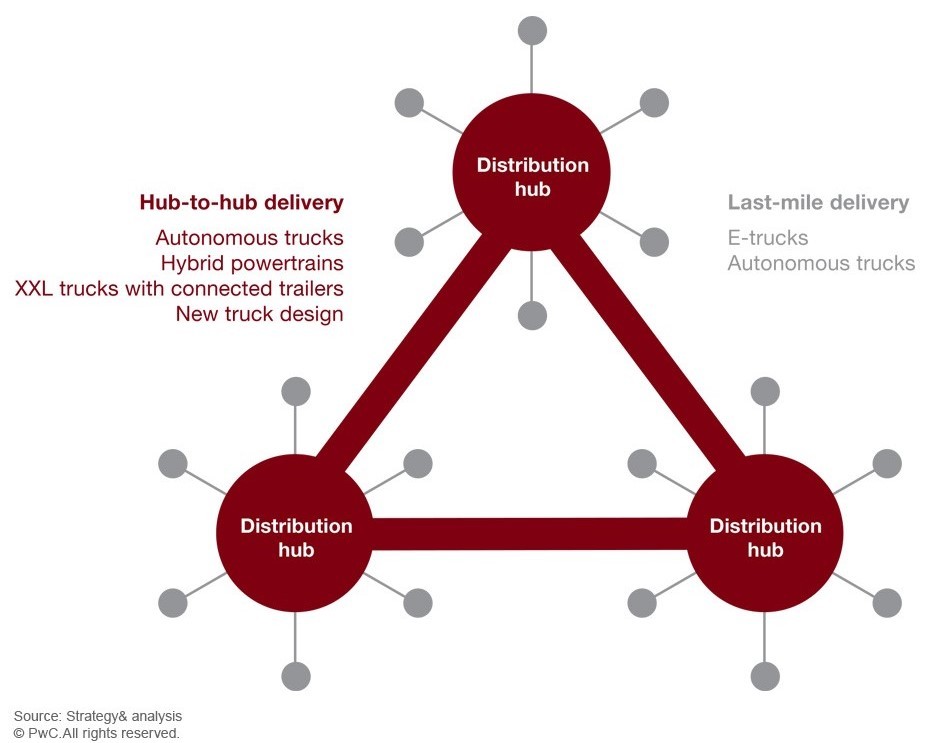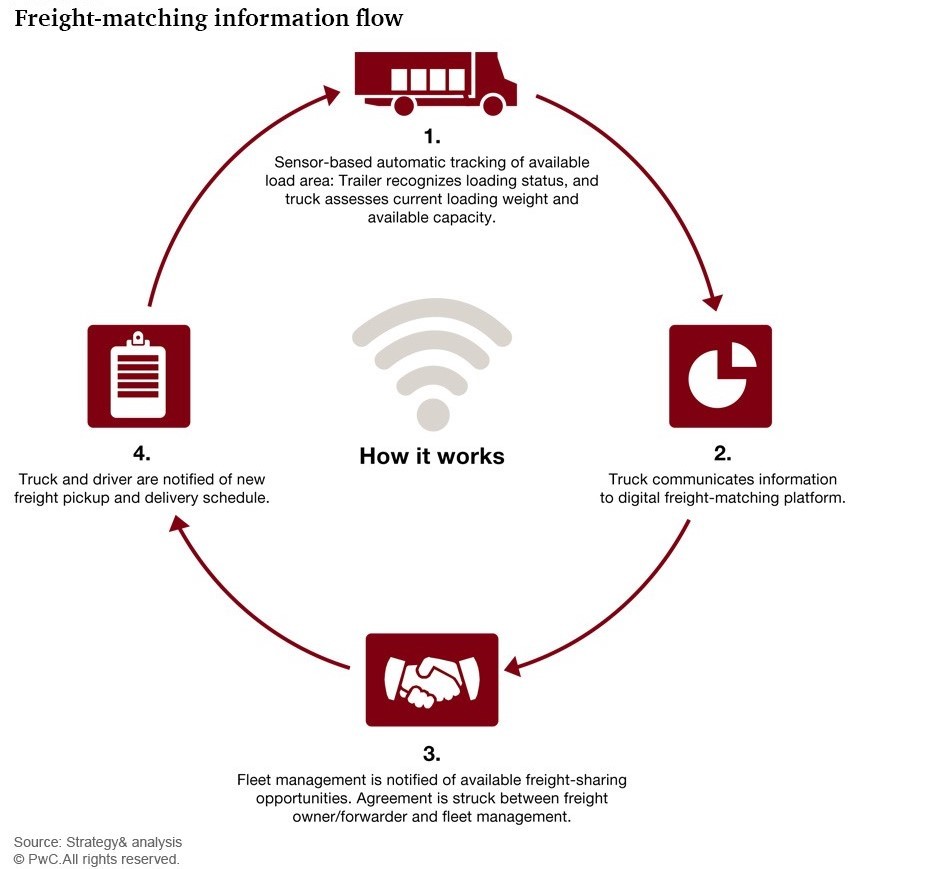Daimler Autonomous Truck – digitizing freight miles

What business model should Daimler's Autonomous Truck choose for its market?
Introduction
Autonomous Connected Trucks Industry
As the world moves towards autonomous driving technology, Daimler is on the forefront leading the way in Autonomous Trucks. [1] This transformation in the trucking operations will renewing the business models in the logistics and supply chain businesses. [2]
The following players have entered the US Autonomous Truck Manufacturing market [3]:
- Uber Otto now developing under Uber ATG
- Peloton – under the parent company Volvo
- Tesla
- Nikola Motor Company
- Embark
In 2015, Daimler gained access to the State of Nevada to pilot trial 2 of its Freightliner Inspiration Trucks. The trucks can be used in autonomous mode to free up the driver’s time to do higher level jobs, while the vehicle drives itself. [4]
Autonomous Connected Trucks Features and Benefits
Autonomous Trucks will bring about multiple benefits to the consumers, road users and the logistics industry. [5]
Consumers:
- Freight will become drastically cheaper. There will be significant cost savings (~28%) from reduced drivers and fuel efficiencies from Autonomous Trucks as shown in Figure 1.
- Consumers will be able to track shipment to greater granularity.
Road Users:
- Accident rates are expected to come down.
- Route planning and optimization can be done automatically based on weather and road traffic condition.
Freight and Truck Operators
- Dynamic optimization of routes will be achieved.
- There will be more maintenance alarms for the connected trucks with built in sensors.
- Platooning optimizes fuel consumption.
Environment
- Emissions will come down due to better power consumption profiles.
Figure 1 Cost Savings due to Autonomous Trucks [5]
The opportunity
By introducing autonomous technology Daimler Trucks Division can strategically reposition itself in the logistics industry (Refer to Figure 2). It has the following 4 options at hand:
- Operate as a Manufacturer (OEM)
- Operate a manufacture and lease model
- Operate a manufacture, lease and trucking business
- Have a joint venture with a large logistic operator
- such as FedEx, DHL, USPS etc. and cover the logistics supply chain
Figure 2 Logistics supply chain [5]
Option 1: Operate as a Manufacturer (OEM)
By playing in this field Daimler remains neutral to all downstream operators. This can help target a broad market. Daimler has a good brand name in this domain and projects quality.
A downside can be if other players dominate the supply chain with joint ventures.
Option 2: OEM + Lease Operator
This implies that Daimler will rent out its vehicles to Trucking Operators. The benefit is that Daimler is still playing in the field that is familiar in. This strategy works well if the number of truck operators increase.
The downside of taking this position is that Daimler will have a lot of capital locked up.
Option 3: OEM + Lease + Trucking Operations
Under this option, Daimler can bill the logistics company by miles booked. This can be a preferred choice for Daimler as the level of complexity in trucking operations goes down. By taking over Trucking Operations Daimler can build a Hubs and Spoke model (figure 3) for its trucking fleet and provide services to a lot of logistic companies.
Additionally, by taking on trucking operations Daimler can get more field experience and enhance the software and hardware from the operator’s lens. In my view this may be Daimler’s best option.
Figure 3 Hub and Spoke model for Autonomous Trucks [5]
Option 4: OEM + Lease + Trucking Operations + Logistics Operations
Daimler can enter further downstream into the logistics business as well by partnering with one of the major logistics operators such as FedEx, USPS, DHL etc. This will form a vertically integrated supply chain.
There may be synergies as all information on the truck can be shared with the logistics operator and vice versa. This will enhance features like package tracking and real-time updates. The information can even be interfaced to the end consumers through electronic channels. Shipping costs can be shared in a live manner and better decisions on warehouse planning / truck load optimization. Additional freight can be added / delivered at hubs along the way. (Refer to Figure 4)
There may be certain downsides such as limited potential to market the product beyond the Joint Venture partner.
Figure 4 Freight matching information flow [5]
Outstanding Challenges
Daimler needs to select its strategic position in the market in the next 2-5 years so that it can establish all the relationships in the market, while pursuing it’s 2025 goal of penetrating deep into the market. []
However, there may be some regulatory hurdles as Daimler establishes into the future of autonomous technologies. [6]
Truck drivers form one of the largest workforce in the US employing around 3 Million people across the United States. This raises ethical questions on replacing men with machines and reducing the number of jobs. [7]
End Notes
[1] Daimler AG, “The pioneer of autonomous driving – Mercedes-Benz Future Truck 2025”,
https://www.daimler.com/innovation/autonomous-driving/mercedes-benz-future-truck.html, accessed November 2017.
[2] Strategy&, Industry 4.0: “How digitization makes the supply chain more efficient, agile, and customer-focused”, https://www.strategyand.pwc.com/reports/industry4.0, accessed November 2017.
[3] Danielle Muoio, “Here’s how Tesla, Uber, and Google are trying to revolutionize the trucking industry”, Business Insider, June 2017 http://www.businessinsider.com/autonomous-trucks-tesla-uber-google-2017-6/#these-projects-only-touch-upon-a-few-of-the-solutions-startups-are-pursuing-to-improve-long-haul-trucking-but-it-could-still-be-awhile-before-these-any-of-these-materialize-11, accessed November 2017.
[4] Daimler AG, “Driving autonomously through Nevada – Freightliner Inspiration Truck”, https://www.daimler.com/innovation/autonomous-driving/freightliner-inspiration-truck.html, accessed November 2017.
[5] Strategy&, “The era of digitized trucking: Transforming the logistics value chain”, https://www.strategyand.pwc.com/reports/era-of-digitized-trucking, accessed November 2017.
[6] Conor Dougherty, “Self-Driving Trucks May Be Closer Than They Appear”, New York Times, November 2017, https://www.nytimes.com/2017/11/13/business/self-driving-trucks.html, accessed November 2017.
[7] Bureau of Labor Statistics, “May 2016 National Occupational Employment and Wage Estimates – United States”, https://www.bls.gov/oes/current/oes_nat.htm#00-0000
(791 words)







This is an important strategic issue not just for Daimler, but also for other automotive companies developing self-driving vehicles as well, such as GM and Ford. As the author has pointed out, there are pros and cons to each option. We can perhaps get a glimpse of the potential strategy from what Daimler is doing on the consumer front. Daimler and Uber announced a partnership earlier this year where Daimler will introduce and operate their own self-driving cars on Uber’s ridesharing network.[1] With the intent of retaining ownership and operations of the cars, this suggests that Daimler does not want to be a pure manufacturer and wants a stake in the operations of its self-driving vehicles, probably because that will enable them to get more data in the field to further improve the vehicle, as Badar pointed out. Option 4 may be a viable option since logistics companies have already begun partnerships with automakers – for example, Deutsche Post DHL recently announced a partnership with auto supplier ZF to put an autonomous fleet on the ground in 2018.[2] Option 4 provides the most data for Daimler and opportunity to optimize and improve the product, and I think Daimler should try to push for this strategy.
[1] Kalanick, Travis. “Uber and Daimler Join Forces on Self-Driving Cars”. Uber Newsroom. Jan 31, 2017. https://www.uber.com/newsroom/uber-daimler-self-driving-cars/
[2] Etherington, Darrell. “Deutsche Post DHL to deploy self-driving delivery trucks by 2018”. Techcrunch. https://techcrunch.com/2017/10/10/deutsche-post-dhl-to-deploy-self-driving-delivery-trucks-by-2019/
Fascinating topic – thanks for sharing, Badar. As I read your essay, I started wondering about some of the potential risks of autonomous trucking and whether these might outweigh some of the benefits you described. While I agree that the accident rate should decrease substantially, any accident involving a large truck can cause a lot of damage and/or loss of human life. In these cases, I imagine Daimler would be liable as the manufacturer (assuming they own the automation platform as well). If Daimler trucks get into a few accidents in the first few years of operation, even if the accident rate is extremely low, could a few incidents harm their reputation to the extent that they have to shut down this business? Additionally, self-driving involves remote engine programming, which introduces cybersecurity risk. Daimler would need to continuously monitor and improve cybersecurity controls, else someone with bad intentions gets access to a platform controlling a fleet of heavy freight vehicles (http://www.ttnews.com/articles/automated-driving-puts-added-emphasis-cybersecurity-connected-trucks). I agree that there is huge potential in an autonomous trucking fleet, though wonder if Daimler or anyone else can really overcome the risks introduced by removing the human “control” element.
Great read Badar, thanks for sharing something insightful which I did not know anything about.
Was wondering about the future of autonomous trucks and the industry in the general to developing countries like India and Pakistan? How
“executable” is technology like this within poor infrastructure, roads and traffic. More importantly, what is the effect it will have on millions of people who’s livelihood depends on the local logistics sector?